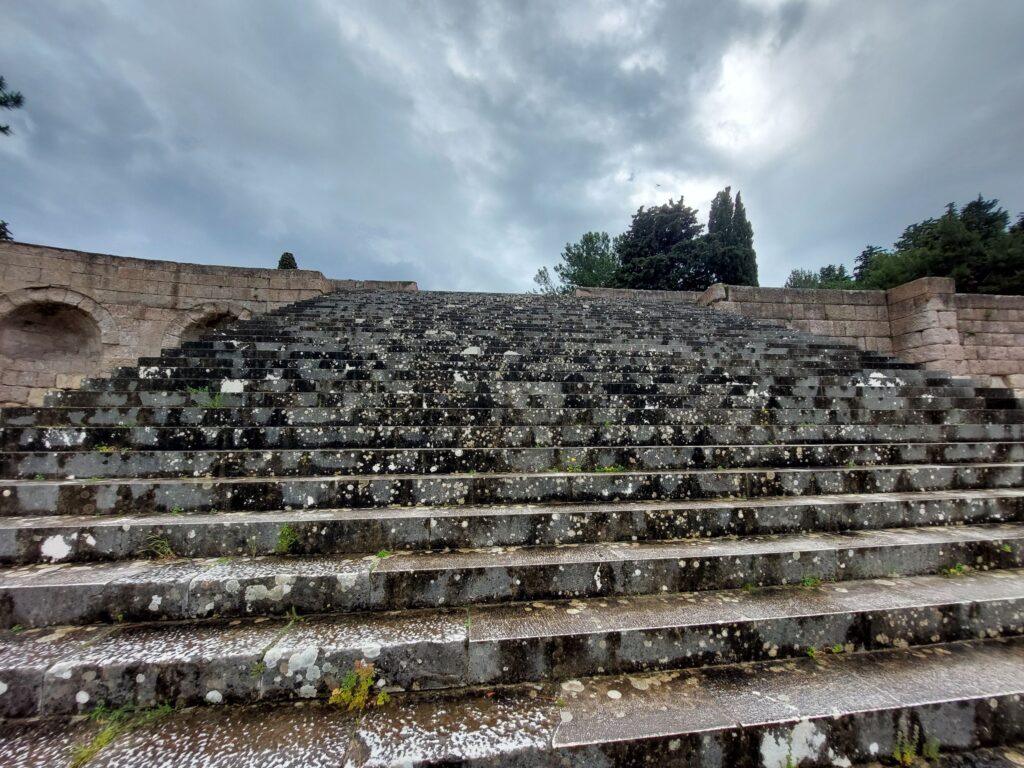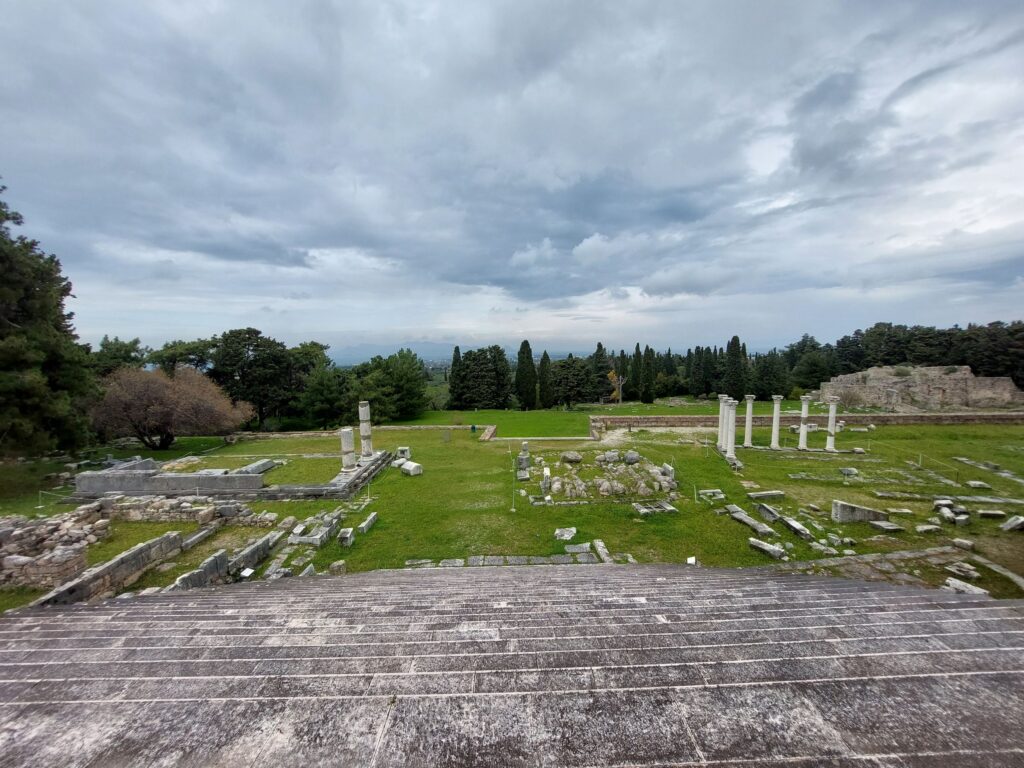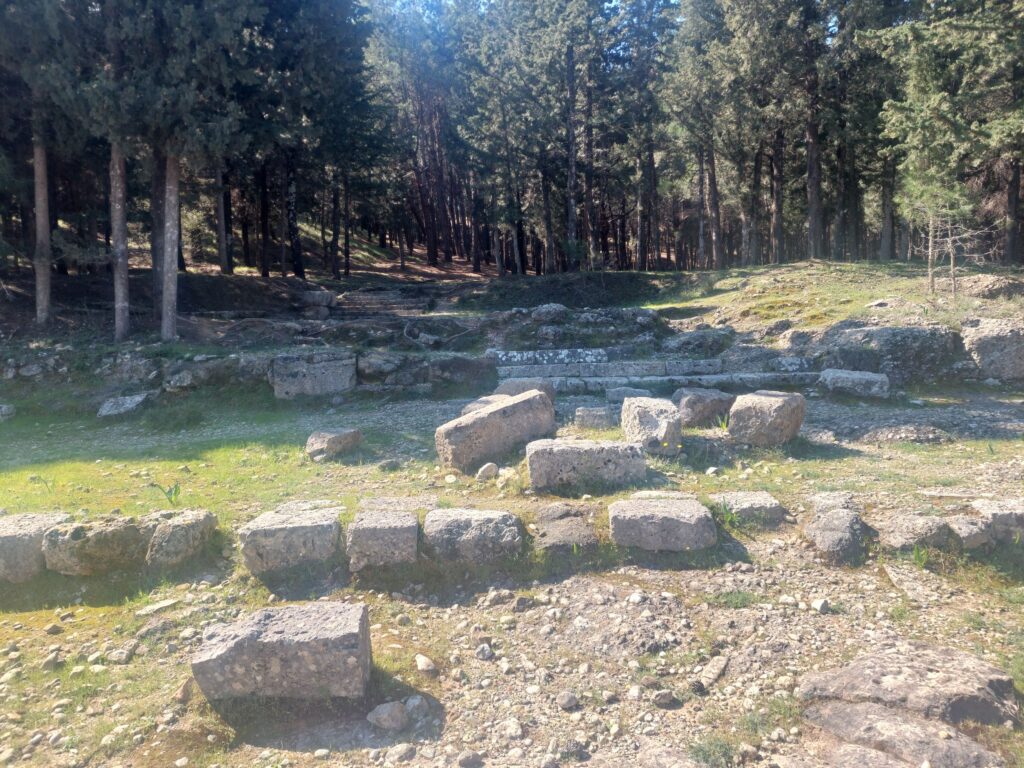Before the summer started, I had the opportunity to visit the Asklepieia of Kos and Paros for my research.
Although I had been studying the Asklepieion of Kos since the first year of my PhD and was relatively familiar with the sanctuary and its sources, this was the first time I had visited the site. In an attempt to understand the experiences of ancient visitors, I decided to walk to the sanctuary from the city centre rather than drive, just to experience for myself how long such a walk might take.
In the past, this journey must have taken longer than an hour, either because the visitor walking towards the sanctuary had health problems, or, if travelling in a group-setting, such as a civic procession, the orchestration of the group would probably have affected the speed. Instead of seeing many cars as I did, a person walking in a procession would have seen many onlookers along the way, while the onlookers would have seen a myriad of people piously making their way to the sacred space, bringing with them sacrificial animals and perhaps singing hymns along the way.
After about an hour’s walk, I arrived at a sanctuary in ruins, empty of people and offerings. This was great for me, as there were no tourists, but a very different experience from the past when it would have been busy, full of people, votive offerings, honorific stelai and statues all clustered around the sanctuary.1

Locals might especially be frequent visitors. Ephebes, as we know from epigraphic sources, often went to the sanctuary for rituals and agonistic competitions, at least in the second century BC.2 The youths and ephebes who went here would be surrounded by examples of exemplary individuals honoured by statue or in inscriptions, providing them with information on how to be a proper citizen. Various civic subdivisions also marked their presence in the sanctuary, as evidenced by horoi of ancestral gods and a decree listing the allotment of new citizens.3 It thus seems that the sanctuary of Asklepios played an important role in the education of new citizens.
Although the sanctuary is now relatively empty, I have gained much more insight into the paths through the space. Combined with a better understanding of the sheer size of the sanctuary, I believe I am better equipped to address questions of movement in the sanctuary and how different ways of walking coexisted, perhaps differentiated by type of visitor and length of stay.






Next I went to Paros, also my first visit to the island. This sanctuary was much closer to the town, so the walk was short, unlike Kos. The site is much smaller and the remains are much more fragmented and damaged. Nevertheless, it was again a good experience to be in the sanctuary rather than just knowing the site from maps and literature.




In the meantime, I have also had time to work on other projects, such as a book review, an article for Pharos (the peer-reviewed journal of the Dutch Institute in Athens) focusing on the foundation narratives of Asklepieia, and finally a conference paper, Ephemeral rituals and urban timescapes: object memory and social histories at sanctuaries of Asklepios in Epidauros and Pergamon, co-authored with Dr Christina Williamson for the XXth International Congress of Classical Archaeology that took place in Paris last June.
Next on the agenda are the sanctuaries of Asklepios on Crete, for which I have planned a visit in Oktober.
- On the Asklepieion see a summary with further references https://religiondatabase.org/browse/2400 ↩︎
- IG XII, 4 1:281 ↩︎
- Parker, Robert. 2008. ‘Patroioi Theoi: the cults of sub-groups and identity in the Greek World.’ In Anders Holm Rasmussen and Susanne William Rasmussen (eds.), Religion and society: rituals, resources and identity in the ancient graeco-roman world: the bomos-conferences 2002-2005 (Quasar: Rome); IG XII,4 1:52 ↩︎

Leave a Reply